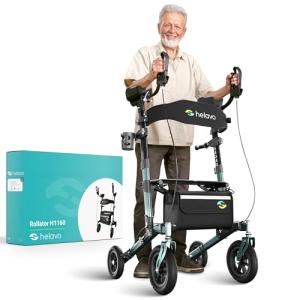Five Killer Quora Answers On Handicapped Walker
The Essential Guide to Handicapped Walkers: Enhancing Mobility for Individuals with Disabilities
Walking aids play a crucial role in enhancing the quality of life for people with handicaps. Among these, handicapped walkers, also known as walkers or rollators, are important tools that assist users in maintaining mobility, self-reliance, and security. Walking Frame aims to offer an in-depth introduction of handicapped walkers, discussing their types, advantages, and essential considerations for users when choosing a walker that best fits their requirements.
Table of Contents
- What Is a Handicapped Walker?
- Kinds Of Handicapped Walkers
- Standard Walkers
- Two-Wheeled Walkers
- Four-Wheeled Walkers
- Features to Consider When Selecting a Walker
- Benefits of Using Handicapped Walkers
- Frequently asked questions
- Conclusion
What Is a Handicapped Walker?
A handicapped walker is a mobility aid designed to assist individuals who have trouble walking or keeping balance due to impairments, injuries, or aging. It offers support, stability, and security, assisting users browse their environment with higher self-confidence and self-reliance. Handicapped walkers come in various styles to suit different mobility challenges, making them flexible tools for many people.
Types of Handicapped Walkers
Understanding the different types of walkers is crucial for selecting the ideal one. Below is a summary of the main kinds of handicapped walkers:
Type
Description
Perfect For
Requirement Walkers
Basic frame without any wheels, requiring the user to lift it to move.
People with stable balance.
Two-Wheeled Walkers
A lightweight walker geared up with 2 front wheels for simpler movement.
Users needing more mobility support.
Four-Wheeled Walkers
A more advanced design with four wheels, handlebars, and typically a seat.
Those requiring maximum support and rest alternatives.
1. Standard Walkers
Requirement walkers, one of the most fundamental variation, are constructed as a tough frame. Users lift the walker and place it forward, enabling stable motion. This kind of walker is ideal for people with restricted mobility but who keep good balance.
2. Two-Wheeled Walkers
These walkers integrate 2 front wheels, considerably enhancing maneuverability compared to standard walkers. Users can push the walker instead of raising it, making it easier to browse.
3. Four-Wheeled Walkers
Also referred to as rollators, four-wheeled walkers featured wheels on all four legs, making them easy to push. Lots of designs also include a comfortable seat and backrest, allowing users to take breaks during longer walks or trips.
Features to Consider When Selecting a Walker
Before acquiring a handicapped walker, it's necessary to assess particular features that might enhance the user experience and security. Here are some necessary factors to consider:
Feature
Description
Weight Capacity
Ensure the walker supports the user's weight.
Height Adjustability
Try to find adjustable handlebars for a correct fit.
Wheels Quality
Take a look at if the wheels are robust for various surfaces.
Brake System
Determine if it has a reliable braking system for safety.
Storage Options
Consider if it has a basket or bag for individual items.
Advantages of Using Handicapped Walkers
The advantages of using handicapped walkers extend beyond mobility, providing emotional and physical benefits:
- Increased Independence: Walkers allow users to move without relying excessively on caretakers or family members.
- Improved Safety: With enhanced stability, walkers considerably lower the danger of falls, contributing to a more secure living environment.
- Boosted Confidence: Users typically report feeling more secure and positive when using a walker, encouraging them to engage more in social activities.
- Health Benefits: Regular usage of a walker can promote exercise, resulting in much better cardiovascular health, enhanced muscle tone, and general well-being.
Frequently asked questions
1. How do I understand which kind of walker is best for me?
Selecting the best walker depends on your physical abilities and mobility requirements. Consulting with a healthcare professional or occupational therapist can supply tailored suggestions based on your particular health situation.
2. How should I preserve my walker?
Frequently inspect your walker for wear and tear, primarily concentrating on the wheels and brakes. Clean down surface areas with a moist cloth to keep it tidy and store it in a dry location when not in use.
3. Can I use a walker on uneven surfaces?
While some walkers are better suited for uneven surfaces than others, care is recommended. It might be helpful to select a walker with bigger wheels for much better stability on such terrains.
4. Are there walkers developed particularly for outdoor use?
Yes, lots of four-wheeled walkers are particularly created for outdoor use, featuring bigger wheels and more robust construction to deal with different terrains.
5. Do walkers been available in various colors or designs?
Yes, various styles, colors, and designs are offered to deal with personal choices while still meeting functional requirements.
Handicapped walkers are transformative help that can considerably enhance the quality of life for individuals dealing with mobility obstacles. By comprehending the types of walkers, their features, and the benefits they use, users can make informed choices that line up with their personal mobility needs. As technology and design progress, the future of handicapped walkers promises even higher assistance and convenience, encouraging independence and an active lifestyle for all.
